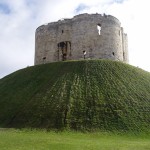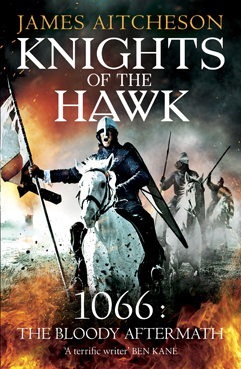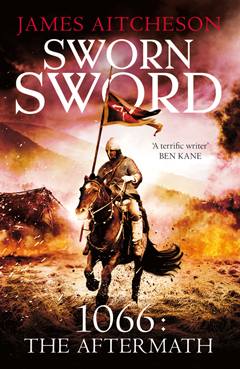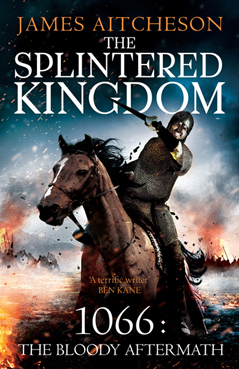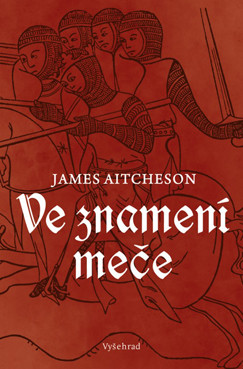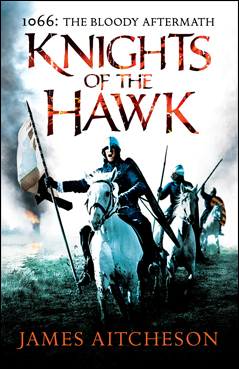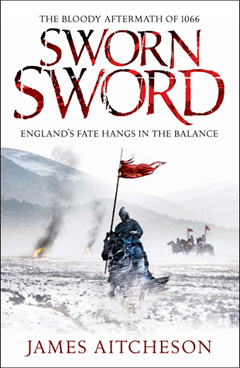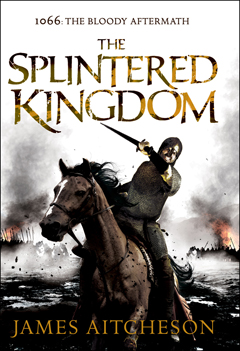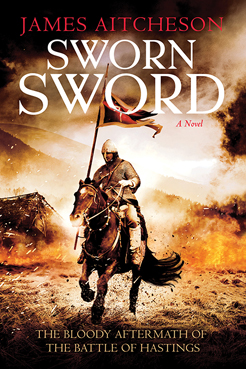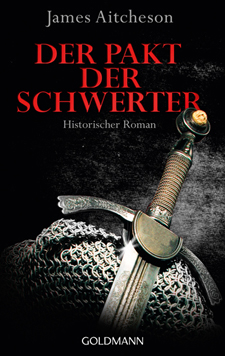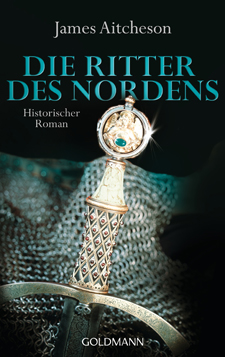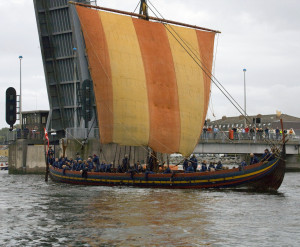
The reconstructed Viking ship, Sea Stallion, the subject of Tom Birkett’s paper at the Unlocking the Vikings conference, sails into Dublin, 14 August 2007.
(Image adapted under the Creative Commons Attribution-ShareAlike 2.0 Generic licence from an original photo by William Murphy.)
2014 is turning out to be the year of the Norsemen! As well as visiting the Vikings: Life and Legend exhibition at the British Museum and attending the Midlands Viking Symposium in the spring, last weekend I took time out from working on my latest novel-in-progress to go to the Unlocking the Vikings conference at the University of Nottingham.
In common with last year’s The Middle Ages in the Modern World at the University of St Andrews, the focus of the two-day event was as much upon the various ways in which the Viking Age has been represented in modern culture as it was upon the history itself. There were so many excellent papers and presentations – too many to mention individually – but I’ve chosen some of what, for me, were the highlights of the weekend.
The first session of the conference focussed on the Vikings in fiction, something of great interest to me since the Norsemen feature prominently both in Tancred’s saga and in the wider story of the Norman Conquest. Historian and novelist VM Whitworth (University of the Highlands and Islands) spoke about developing Viking Age characters, and the need for authors to fully immerse themselves in the thought-world of their creations. Ruarigh Dale (University of Nottingham) discussed portrayals of berserkers in current fiction, and how modern concepts compare with the original descriptions of these warriors in the Norse sagas.
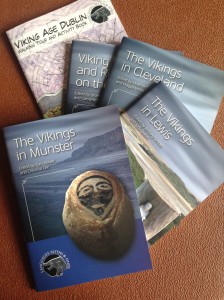
The findings of the Languages, Myths and Finds project were brought together in these five beautifully produced booklets.
The conference also marked the conclusion of the Languages, Myths and Finds project, which aimed to investigate how Norse heritage and culture continue to make an impact in the twenty-first century, and the ways in which the Viking past is remembered and celebrated in Dublin, Munster, the Isle of Man, the Hebrides and Cleveland. Each of the regional teams presented their findings, which included the dramatic reveal by the Cleveland researchers of a previously unknown Viking runestone – an especially exciting discovery since, in contrast to Scandinavia, so few have been found in England.
As well as giving presentations at the conference, the teams also produced a series of booklets containing the findings of their research (pictured, above left): one for each of the five regions explored in the study. The booklets can also be downloaded in PDF form from the Languages, Myths and Finds website, where you can also find out more about the project and its aims. The video below from the University of Nottingham also gives a brief introduction.
Other highlights from the conference included a skaldic performance by Thor Ewing, featuring music on reconstructed Viking Age harp and flute, and a paper by Tom Birkett (University College Cork) on his experiences aboard the Sea Stallion – a reconstructed Viking ship based on the remains of Skuldelev 2, an eleventh-century vessel excavated at Roskilde, Denmark in 1962.
As always with these events, I came away brimming with ideas and armed with several pages of notes, furiously scribbled during the various talks and presentations. And who knows? Somewhere in all those notes might lie the inspiration for a future novel or two…
Last week I ventured northwards to York for the annual Jorvik Viking Festival. For the 27th year, Norsemen took over the city for February half-term week and set up camp in the streets, even bringing their longship into Coppergate Square for those queueing up outside the Jorvik Viking Centre to admire.
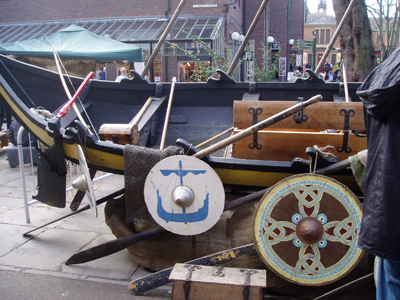
The Viking longship in Coppergate Square, outside the Jorvik Viking Centre.
I was in York to talk about Sworn Sword, the novel’s connection with the city, and what it was about York that made it such a battleground during the mid-eleventh century as English, Norman and Scandinavian forces all struggled to capture and control it. At the end I also gave a special sneak preview reading from the very first chapter of the sequel, which will be released in hardcover on 6 September (more details on that to follow soon).
York has a long history dating back to the Roman period. By the time of the Norman Conquest it was the second biggest city in England (after London): the chief town of the north of the kingdom; a major manufacturing centre for metalwork, woodwork, glass and jewellery; and a burgeoning port and trading hub with links all across Europe and beyond, even as far as Byzantium and Samarkand in modern-day Uzbekistan. In 1069 when Sworn Sword is set it would have been a fantastically vibrant place to be, with people from all cultures mixing together and a lot of wealth being brought in from abroad.
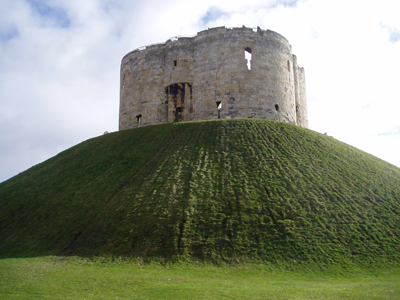
Clifford's Tower, York - the thirteenth-century keep that stands on the site of the original castle.
Militarily speaking, York was also a crucial strong-point, and whoever controlled it tended to hold sway over the vast province known as Northumbria that stretched from the Humber Estuary in the south to the borders of the Scottish kingdoms in the north.
For that reason it formed the location for some of the fiercest struggles for power witnessed in this period, both before the Conquest – the Battle of Stamford Bridge, for example, which was fought only a few miles away between the namesake kings Harold Godwineson of England and Harald Hardrada of Norway – and afterwards too. It’s not too much of an exaggeration to say that York was where in many ways the future of England was decided in those fateful years.
I visited the city a few years ago as part of my research for the novel, so that I could get a feel for the scale of the medieval city and the lie of the land. Not much of Conquest-era York survives today, but by walking the streets I was able to get a feel for the richness of the place’s history. On my return last week I also took the time to snap some pictures, the best of which you can see on this page!
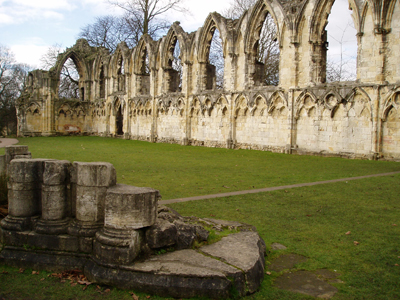
The ruins of St Mary's Abbey outside Bootham Bar to the northwest of medieval York.
One of the locations that I revisited last week was St Mary’s Abbey (pictured above), the ruins of which now lie in the Yorkshire Museum Gardens. St Mary’s was in its turn built on the site of an earlier foundation dedicated to St Olave in a district once known as Earlsburgh, which it is suggested received its name from a fortified palace belonging to the Anglo-Scandinavian earls of Northumbria that used to stand nearby.
That palace is the same one referred to in Sworn Sword as the residence of the real-life vicomte (sheriff) of York, William Malet, who was installed by King William I after the city was first captured by the Normans in 1068. Even though the site looks very different nowadays, somehow the knowledge that I was treading the same ground as my characters helped me visualise those scenes when I came to write the novel.
Thanks to the folks at York Archaeological Trust and the Jorvik Viking Centre for inviting me to come and talk. It was a pleasure to meet so many other historically-minded people and to share my love of this period. I hope it’s not too long before I find myself back in York. And for those of you reading this who have a special interest in all things Norse-related, the good news is that there are more Vikings to come in Books 2 and 3 – watch this space!
*
For information about other Viking- and medieval-themed events taking place in and around York, visit the Jorvik Viking Centre website.


